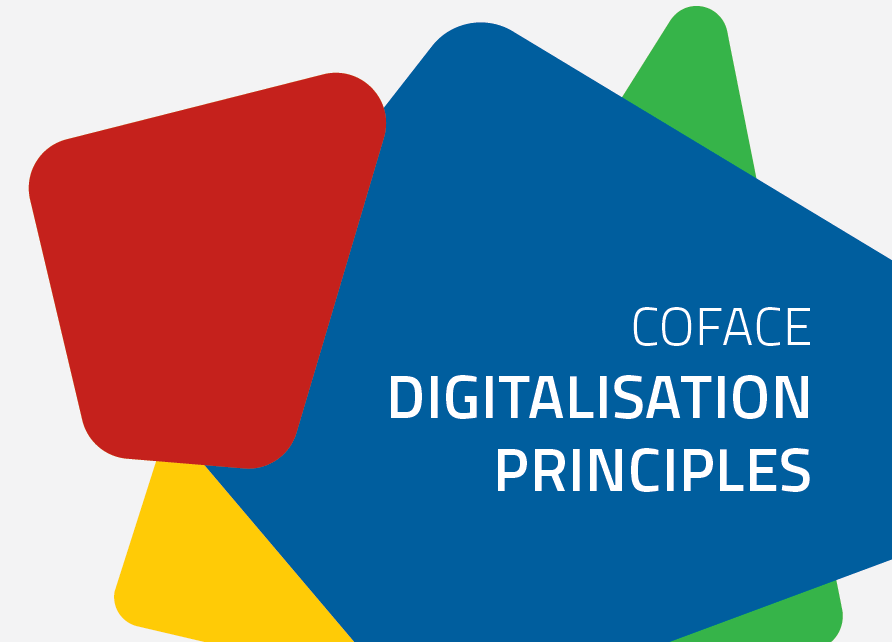COFACE Families Europe developed six key principles in the framework of its #ToysAndDiversity campaign, aiming at raising awareness and analysing the representation of children in the media and in toy catalogues. These six principles offer a critical view of the world of toy catalogues, informing of potential risks and concerns among parents and families.
These six principles are to be considered as core values. COFACE Families Europe encourages the industry, NGOs, parents and families to take them up as guidelines to be adapted to their specificity.
1. Let children decide what they want to play with: no more division into boys and girls sections
A toy can be different things for a child and support his/her creativity, imagination, learning development and fun. Introducing categories “for boys” and “for girls” means limiting children’s choices of which toys to play with by imposing on them predefined and stereotyped categories. The same is valid for indirect classification, such as using specific colours or shades to refer to boys or girls (e.g. pink and pastel colours for girls, darker and bolder colours for boys) or by representing next to a certain toy only boys or only girls. We suggest to eliminate sections for boys and girls, start using all colours for all toys and introduce pictures of boys and girls playing with all types of toys.
2. Do not channel children into stereotyped professions and life patterns: let them play to be whomever they want to be
Imagination has a big role for children play. Do not limit their imagination of whom they can be (and impersonate) by offering to boys and girls different costumes and profession-related toys. Let’s not reduce their ambitions by offering them only and constantly the same pre-defined roles. There is a need to open to both boys and girls the chances to see someone like them impersonating all professions. In the same way, because the number of fathers more actively and publicly taking care of their children is growing, it would be appropriate to show more boys playing parenting and care-related duties.
3. Join your voice to end gender-based violence and bullying: promote non-violent images and behaviours
One in three women have experienced physical or sexual violence since the age of 15 in Europe. Bullying, including cyberbullying, is a growing phenomenon across the EU Member States, with about 1 in 5 children having experience of online bullying. Images displaying violence or behaviours that can be violent, harassing, demeaning should be categorically avoided. When children are represented together, it would be appropriate to avoid patterns that would put one child category (e.g. girls, children with disabilities, of a specific race) as a passive audience to the other child.
4. Represent families in their diversity
A growing number of children grow up in single parent families, bi-national or bi-racial families, same sex and rainbow families, transnational families or multigenerational families. Representation of adults is, however, limited to a very restricted sample and possibly stereotyped to white adults in their 30s-40s. We recommend including adults of different races, age groups (e.g. grandparents), adults with disabilities because all family forms and family members deserve respect and representation.
5. Children with disabilities play too: stop their invisibility and include them in the toy world
There are 80 million Europeans with disabilities: children, parents, grandparents and other family members. In our survey we did not found any child with disabilities. Children with disabilities play, go to school and use their imagination, just like any other children. But they are invisible. Inclusive education has been proven to be beneficial for all children, including children without disabilities. Let’s put an end to their invisibility, promote diversity and include them in the toy world, both by including their images in visual communication and by producing toys representing them.
6. Children with a diverse racial background: let’s move to a fair representation
The number of EU citizens and residents having different racial backgrounds is growing in Europe, together with the number of children having parents or family members coming from different countries or racial backgrounds. Their representation is very low in toy catalogues and sometimes can be linked to racial stereotypes or filters may be applied to the images to make black or dark skin look less dark. A fairer representation of the diversity of children present in our society in its complexity would be appropriate.
Read more about the Toys and Diversity campaign here
Join us in raising awareness on the impact of toy marketing, by publishing your photos of positive or negative toy stereotypes or posting them on Social Media with the #ToysAndDiversity hashtag.





